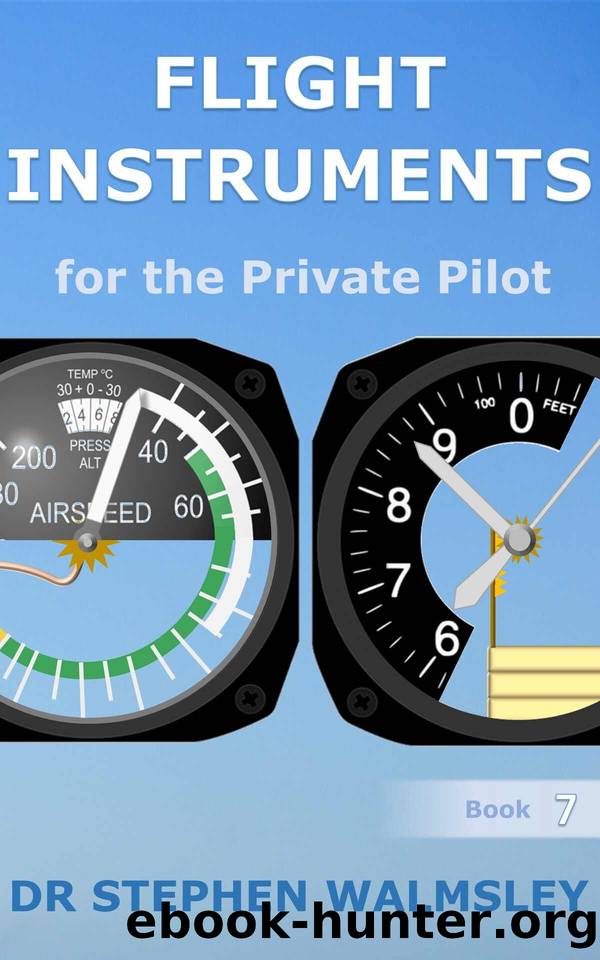Flight Instruments for the Private Pilot (Aviation Books for the Private Pilot) by Dr Stephen Walmsley

Author:Dr Stephen Walmsley [Walmsley, Dr Stephen]
Language: eng
Format: mobi
Published: 2022-04-10T00:00:00+00:00
Figure 5.1: The t-display is a common flight instrument layout.
Some displays can increase the risk of pilots incorrectly reading information; with the classic three-pointer altimeter one example. This type of altimeter displays altitude using three pointers (hundreds, thousands and tens-thousands of feet), with all the pointers being a similar width. During a high workload or stressful situation, pilots have misinterpreted the pointers; for example, reading 10,000 feet instead of 1,000 feet. Similarly, parallax error can occur in some conventional instruments (e.g. airspeed, altitude), whereby viewing the instrument pointer from an angle can result in an incorrect reading. The wide implementation of digital displays has mostly eliminated both of these issues.
Color is a very useful tool in displaying the importance or relevance of information, as shown in Figure 5.2. The color alone can tell the pilot the significance of the information. Red color is used to indicate something serious, for example, red markings on the airspeed indicator, like VNE. Amber or yellow indicates caution, meaning pilots should be careful operating in that particular range (e.g. operating in the yellow airspeed range). Blue is usually used for general information, for example, the position of the flaps. Green is for normal operating range, such as normal engine indications (e.g. oil pressure).
Download
This site does not store any files on its server. We only index and link to content provided by other sites. Please contact the content providers to delete copyright contents if any and email us, we'll remove relevant links or contents immediately.
| Automotive | Engineering |
| Transportation |
Small Unmanned Fixed-wing Aircraft Design by Andrew J. Keane Andras Sobester James P. Scanlan & András Sóbester & James P. Scanlan(32684)
Navigation and Map Reading by K Andrew(4963)
Endurance: Shackleton's Incredible Voyage by Alfred Lansing(4627)
And the Band Played On by Randy Shilts(2082)
Wild Ride by Adam Lashinsky(1901)
Top 10 Prague (EYEWITNESS TOP 10 TRAVEL GUIDES) by DK(1899)
The Box by Marc Levinson(1898)
The Race for Hitler's X-Planes: Britain's 1945 Mission to Capture Secret Luftwaffe Technology by John Christopher(1766)
The One Percenter Encyclopedia by Bill Hayes(1754)
Trans-Siberian Railway by Lonely Planet(1664)
Girls Auto Clinic Glove Box Guide by Patrice Banks(1654)
Looking for a Ship by John McPhee(1608)
Batavia's Graveyard by Mike Dash(1585)
TWA 800 by Jack Cashill(1564)
Fighting Hitler's Jets: The Extraordinary Story of the American Airmen Who Beat the Luftwaffe and Defeated Nazi Germany by Robert F. Dorr(1544)
Good with Words by Patrick Barry(1540)
Troubleshooting and Repair of Diesel Engines by Paul Dempsey(1531)
Ticket to Ride by Tom Chesshyre(1522)
Bligh by Rob Mundle(1519)
